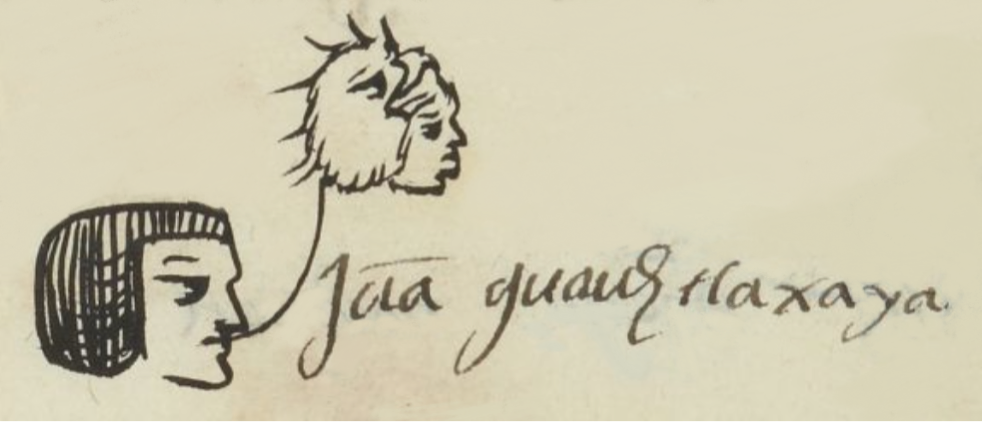Cuauhtlaxaya (MH491v)
Cuauhtlaxaya (MH491v)
This black-line drawing of the compound glyph for the personal name Cuauhtlaxaya (here, attested as male) consists of two elements. One is the head of an eagle (cuauhtli)] in profile looking toward the viewer's right. Its visible eye is open, its beak is open, and it has some spiky feathers coming off the top and the back of its head. To the right and adjoining the eagle's head is a human face (xayacatl), also in profile, and also facing toward the right.
Stephanie Wood
This name may be something like Eagle-Face. Another possibility is that the second part of the name, tlaxaya, is something of a homophone for tlazaya, a conjugation in the imperfect past for tlaza, to hurl, thrown down. This would require a significant change in orthography and pronunciation, however, by switching from "x" to "z." It seems unlikely.
Stephanie Wood
Juā guauhtlaxaya
Juan Cuauhtlaxaya
Stephanie Wood
1560
Xitlali Torres
nombres de hombres, feathers, plumas

cuauhtli, eagle, https://nahuatl.wired-humanities.org/content/cuauhtli.
xayacatl, face, mask, https://nahuatl.wired-humanities.org/content/xayacatl.
Águila-Cara
Stephanie Wood
Matrícula de Huexotzinco, folio 491r, World Digital Library, https://www.loc.gov/resource/gdcwdl.wdl_15282/?sp=62&st=image.
This manuscript is hosted by the Library of Congress and the World Digital Library; used here with the Creative Commons, “Attribution-NonCommercial-ShareAlike 3.0 License” (CC-BY-NC-SAq 3.0).


